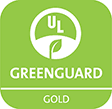The Dirty Details
Low-VOC, water-based paints are generally better choices, but some may contain other harmful ingredients. Buy Green Seal-11 certified paints, consult the product’s Material Safety Data Sheet, or contact the manufacturer to avoid products with these ingredients:
Nonylphenol Ethoxylates
These common paint additives can disrupt hormones, are linked to reproductive harm and are highly toxic to aquatic life. Nonylphenol ethoxylates won’t be listed on the label and may not be listed on Material Safety Data Sheets, so the best ways to avoid them are to buy paint that is Green Seal-11 certified or call the manufacturer to ask.
Biocides, added to preserve paint, are often toxic and can linger in the air for years after a room is painted. Formaldehyde, a carcinogen and asthmagen, is also used as a preservative and can be released from biocides added to paint; ammonia, a respiratory irritant and asthmagen, can do the same. Biocides are generally not listed on the label or the Material Safety Data Sheet because they are added in such small amounts. The best ways to avoid them are to buy paint that is Green Seal-11 certified or call the manufacturer to ask.
Glycol Ethers
Water-based paints may contain solvents such as ethylene glycol, a respiratory irritant that can cause headaches and nausea, as well as reproductive and developmental problems. Studies have shown that children exposed to low levels of glycol ethers, such as after a room is painted, had higher incidences of allergies and asthma.
Glycol ethers are generally not listed on the label or the Material Safety Data Sheet, so the best ways to avoid them are to buy paint that is Green Seal-11 certified or call the manufacturer to ask.
Phthalates
Some paints contain phthalates, plasticizers added to increase the paint’s flexibility. When the paint dries, phthalates can enter the air or stick to dust particles. One type of phthalate used in paint, dibutyl phthalate, or DBP, has developmental effects and causes hormone disruption in animal studies. Phthalates are generally not listed on the label or the Material Safety Data Sheet, so the best ways to avoid them are to buy paint that is Green Seal-11 certified or call the manufacturer to ask.
“Antifungal” or “Antimicrobial” Additives
Paints are often marketed as antimicrobial, claiming to better protect surfaces from germs and mold. However, there are no studies to support these claims and the added pesticides can be harmful to your health.
Crystalline Silica
Crystalline silica is sometimes added to paint for color and texture. Sanding or scraping the paint after it dries can create dust-containing crystalline silica, a carcinogen if inhaled.
Some metals, such as mercury and lead, are no longer allowed for use in paints. But toxic metals, such as cadmium and chromium, can still show up as pigments and should be avoided. Unfortunately cadmium and chromium won’t be listed on the label or the Material Safety Data Sheet, so the best ways to avoid them are to buy paint that is Green Seal-11 certified or call the manufacturer to ask.

